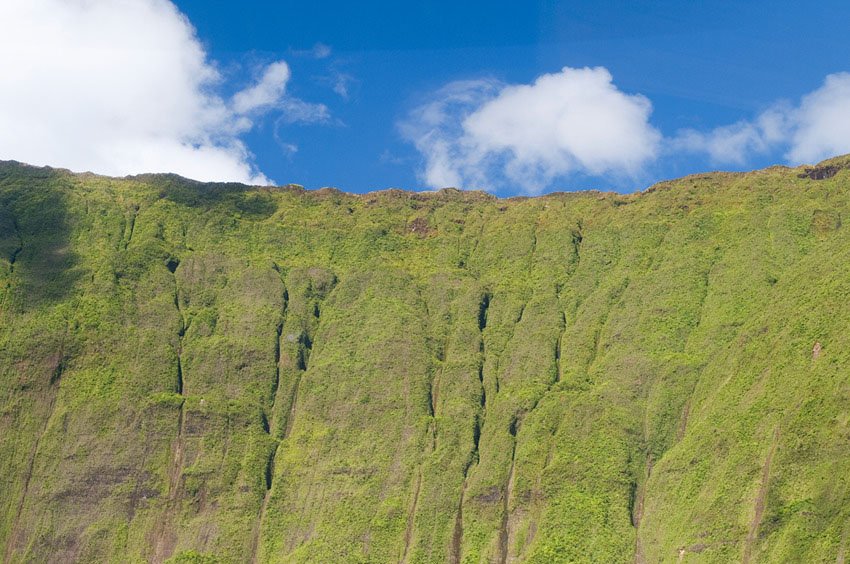 |
Source: http://www.to-hawaii.com/kauai/attractions/mountwaialeale.php (Mt Wai'ale'ale)
Rare image of a sunny day on Mt Wai'ale'ale
|
In my previous blog entry I introduced Mt. Waialeale as Kauai, Hawaii’s highest point and receiving the
most rainfall. Some of the reasons I found that there is so much rainfall is
due to the mountains round and conical shape which exposes all its sides to
moisture laden winds (www.to-hawaii.com) The site goes on to talk about
how “the mountain summit lies just below the trade wind inversion layer of
6,000 feet above which trade-wind-generated clouds cannot rise.” Finally, the mountain's steep cliffs cause
the humid air to rise quickly over 3,000 feet (910 m) in less than a half mile
(800 m) and drop a large portion of its rain on one spot.
 |
| Source: http://www.hawaii-guide.com/kauai/hiking_trails/waialeale_blue_hole_hike |
 |
| Source: http://www.to-hawaii.com/kauai/attractions/mountwaialeale.php (Mt Wai'ale'ale) Lecture 8 Water, Atmospheric Moisture, and Clouds and Lecture 7, Earths circulation is important in helping demonstrate Kauai, Hawaii being the wettest spot on earth. The trade winds remain an important factor in making Mt. Wai’ale’ale the wettest spot on Earth. Kauai vacation site tells us that, normal trade winds blow across Kauai from the northeast. These trade winds combined with Kauai’s tropical location result in the island’s moderate temperature and humidity. (http://www.kauaivacationsecrets.com/kauai-weather/) Furthermore, the side of the island that faces the trade winds is called the windward side. It’s because of these winds that Kauai’s north side gets the most rain. As clouds hit the mountains, they cool causing condensation and rain. Awesome video showing Mt. Wai'ale'ale on the island of Kauai, Hawaii during one of its wet days.
References:
Dr. Casey D.
Allen, Associate Professor, Department of Geography & Environmental
Sciences University of Colorado Denver: Geographic concepts and understanding
were taken from lectures on Water, Atmospheric Moisture, and Clouds as well as Earths Circulation and any other lectures
needed.
  |

No comments:
Post a Comment